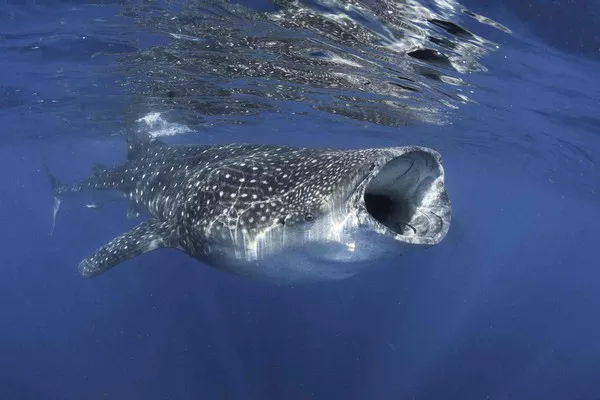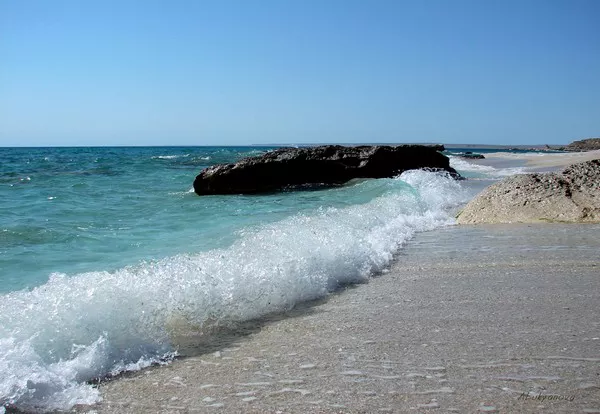The world beneath the ocean’s surface is a realm of unparalleled marvels, home to some of the largest and most fascinating creatures on the planet. In this exploration, we delve into the depths of the aquatic world to uncover the 10 biggest fish that roam the oceans, examining their unique characteristics, habitats, and the critical role they play in maintaining the delicate balance of marine ecosystems.
Top 10 Largest Fish in the World
1. The Whale Shark (Rhincodon typus):
The whale shark, topping the list as the largest fish in the world, is a magnificent and docile giant. With an average length of 40 feet and weighing up to 20.6 metric tons, these filter-feeding behemoths cruise through tropical waters, utilizing their enormous mouths to filter plankton, small fish, and even microscopic organisms. Found in warm seas across the globe, the whale shark holds the title of the largest non-mammalian vertebrate.
2. Basking Shark (Cetorhinus maximus):
The basking shark is renowned for its colossal size, often reaching lengths of 40 feet or more. This gentle filter feeder traverses the cooler waters of the North Atlantic, Pacific, and Southern Hemisphere, sieving plankton and small fish through its massive gill slits. Despite its formidable appearance, the basking shark poses no threat to humans, feeding exclusively on microscopic marine organisms.
3. Giant Manta Ray (Manta birostris):
The giant manta ray is a majestic species with a wingspan that can exceed 23 feet. These gentle giants navigate tropical and subtropical waters, using their distinctive cephalic lobes to channel plankton-rich water into their mouths. Renowned for their acrobatic displays and intricate patterns, giant manta rays contribute to the allure of the world’s oceans.
4. Giant Oceanic Manta Ray (Mobula birostris):
Often confused with the giant manta ray, the giant oceanic manta ray is a distinct species known for its remarkable size, reaching wingspans of up to 29 feet. Roaming the open oceans, these rays are characterized by their triangular pectoral fins and the distinctive markings on their ventral surfaces. Despite their imposing size, giant oceanic manta rays are peaceful filter feeders.
5. Great White Shark (Carcharodon carcharias):
The great white shark, a legendary predator, is an apex carnivore that commands respect in the marine food chain. With lengths exceeding 20 feet, these formidable sharks are found in coastal waters across the globe. Renowned for their strength, speed, and iconic serrated teeth, great white sharks are crucial for maintaining the ecological balance of marine ecosystems.
6. Tiger Shark (Galeocerdo cuvier):
Named for its distinctive vertical stripes resembling those of a tiger, the tiger shark is a powerful and opportunistic predator. With an average length of 16 feet, these sharks inhabit tropical and subtropical waters, preying on a wide variety of marine creatures. Known for their voracious appetite and ability to consume almost anything, tiger sharks play a vital role in regulating marine populations.
7. Greenland Shark (Somniosus microcephalus):
The Greenland shark, one of the longest-lived vertebrates on Earth, inhabits the frigid waters of the Arctic and North Atlantic. With a sluggish pace and average lengths ranging from 12 to 24 feet, these mysterious giants have been known to live for centuries. Despite their slow movements, Greenland sharks are efficient hunters, feeding on fish, seals, and even other sharks.
8. Sawfish (Pristidae family):
Sawfish, members of the Pristidae family, are distinctive elasmobranchs characterized by their long, tooth-studded rostrums resembling saws. While not true sharks, sawfish exhibit remarkable sizes, with some species reaching lengths of over 20 feet. Found in both saltwater and freshwater environments, sawfish use their unique rostrums to locate and incapacitate prey.
9. Goliath Grouper (Epinephelus itajara):
The Goliath grouper, a colossal fish inhabiting tropical and subtropical waters, ranks among the largest bony fish in the world. With lengths exceeding 8 feet and weights surpassing 800 pounds, these reef-dwelling giants are critical for maintaining the health of coral ecosystems. Goliath groupers are known for their distinctive appearance, massive size, and powerful presence on coral reefs.
10. Arapaima (Arapaima gigas):
The Arapaima, native to the Amazon River Basin, stands as one of the largest freshwater fish globally, reaching lengths of over 15 feet and weights exceeding 485 pounds. These air-breathing giants, equipped with modified swim bladders that function as primitive lungs, navigate the Amazon’s labyrinthine waterways. With scales resembling armor, the Arapaima is a formidable predator in its freshwater habitat.
See Also: Top 10 Smartest Animals On Earth
Conclusion:
The oceans house an awe-inspiring array of colossal fish, each contributing to the intricate tapestry of marine life. From the gentle giants like the whale shark to the apex predators like the great white shark, these majestic creatures play pivotal roles in maintaining the ecological balance of the world’s oceans. As we continue to explore and understand these aquatic wonders, the importance of conservation efforts becomes increasingly evident to ensure the preservation of these magnificent species for generations to come.
You Might Be Interested In:



























